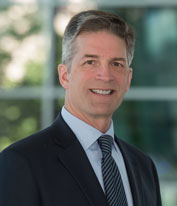Landfill gas to pad DTE Energy’s renewables portfolio

The ubiquitous methane gas percolating beneath landfills and dairy farms is seen as a hot commodity for DTE Energy as it moves away from coal toward a future based on natural gas and renewables.
It is a field that DTE Energy has been active in for several years and could be on the brink of a timely expansion as more states look to recovered methane, known as Renewable Natural Gas (RNG), as a means of reducing greenhouse-gas emissions.
“We have been collecting methane from landfills for 20 years,” Chairman and CEO Gerry Anderson said at the Edison Electric Institute Financial Conference in San Francisco on Tuesday. “I expect that we will add several RNG projects to our portfolio in the next few years.”
Speaking to a crowd of financial professionals, Anderson said DTE had in the past established itself early in niche markets that later hit pay dirt. “And it feels like this could be one of those for us,” he said.
Harvesting RNG involves establishing small plants at municipal landfills or huge livestock and dairy farms that generate high volumes of organic trash and other now fungible waste products. Those unsavory materials break down to methane over the years, and the process can be sped up with the help of added bacteria that boosts the fermentation process.
The methane is generally collected, compressed, and then trucked to fueling stations where it is used to power compressed-natural gas vehicles. Not only does RNG address the issue of agricultural waste, but it can also chip in on the war on climate change by replacing gasoline-powered vehicles. It also provides a renewable energy source that is available around the clock and regardless of the weather.
In August, DTE broke ground in Wisconsin on its first RNG project involving a sprawling, major dairy farm as the source for an endless river of animal waste. It is estimated that the project, which will go online next year, could annually eliminate as much greenhouse gas as would be produced by 9,200 cars or 4.8 million gallons of gasoline.
California has been a leader in the adoption of so-called biomethane gas as it plows forward on renewables. A bill in the state legislature would require the California Public Utilities Commission and Air Resources Board to consider adopting biomethane procurement targets for California gas companies.
“The latest state legislation means this renewable fuel is primed for further development,” Yuri Freedman, senior director of business development for Southern California Gas (SoCalGas), told a conference on RNG that was held in October in Downey, Calif.
Anderson noted that since RNG did not depend on DTE’s pipeline network, the company would be able to seek out projects outside its Michigan territory. “A whole lot of states are now looking into RNG,” he said.
Procuring natural gas the old fashioned way – drilling into known basins and running to market through a pipe – will also play a significant role in DTE’s future fuel mix. Anderson told the audience that its four pipelines in the gas-rich Appalachians were still being expanded with capacity increases planned in the Marcellus/Utica Basin. The investments will beef up DTE’s position as a market player. They will also support DTE’s plans to retire 6,400 megawatts (MW) of coal generation by 2040 while adding around 7,500 MW of renewable and gas generation during the same period.
At the same time DTE continues to look to expand its business of building cogeneration plants for major commercial customers, it is also moving forward with upgrades to both its electrical and gas networks, which serve about 2.2 million Michigan customers. Anderson said the new gas mains, along with improved electrical circuits and substations, would increase reliability while also reducing methane emissions seeping out of outdated iron pipes and other equipment.
Moreover, DTE’s blueprint for the future will keep the company ahead of the regulatory curve and provide rosy revenue streams for investors, Anderson told the analysts. But he added that it also appeals to the end users of Michigan who are taking climate change seriously.
Anderson summed up the situation: “Our customers are clearly requesting cleaner energy sources.”
